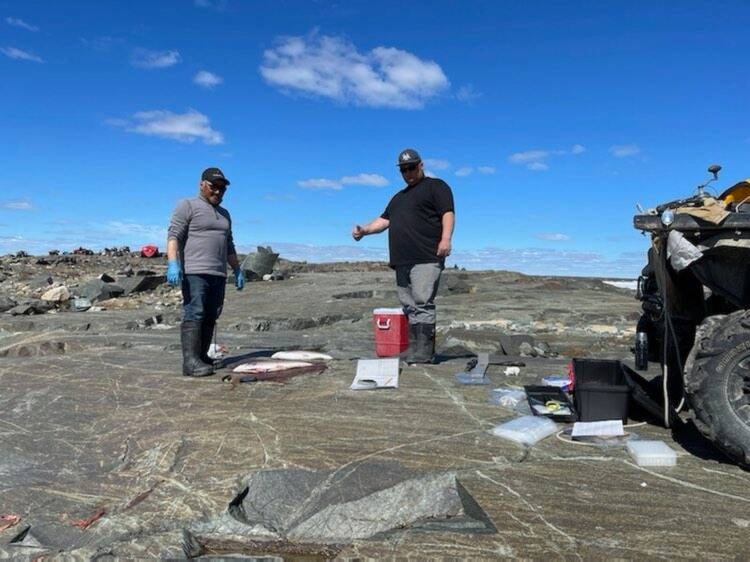A new ecosystems monitoring program run by the Kivalliq Wild Board is expected to help the region better manage its wildlife, in particular polar bear and caribou populations.
The community-based monitoring research is a two-part program which is looking at the impact on both terrestrial and marine ecosystems in the Kivalliq region by looking at the links between climate, development, the environment and wildlife.
Both programs are currently focused on building up a database of samples which track the diets of the animals and the vegetation they depend on.
According to KWB research co-ordinator Clayton Tartak, the research methods employed rely on examining stable isotope ratios – the chemical composition of nutrients in soft tissue, largely from diet – in the animals.
In simple terms, Tartak explained that this research is based on the “you are what you eat” principle.
The research, which began in 2020 is being funded by $600,000 from the federal government and is expected to continue until at least 2023, although Tartak hopes it will continue indefinitely.
‘Running less invasive research’
According to Tartak, one of the motivating factors in starting the program was learning that a GN caribou biologist in the Kitikmeot had misidentified a bull caribou as a cow during a GN collaring program intended to track caribou populations.
“A lot of concerns were raised previously because of research that was done in Western Nunavut,” Tartak said. “After that incident Inuit thought that it would be better off running less invasive research.”
In the case of caribou, the researchers are interested in collecting samples of stomach content, stomach, liver and heart, along with a small part of meat and fat.
Last year was the first time the KWB started developing a baseline of samples to be studied.
In total they collected samples from 28 caribou in 2020. They are hoping to increase that number by the end of the fall hunt this year.
“We’re hoping to capture more from in the fall to capture the change in the diet,” Tartak said.
Rankin Inlet’s Connor Faulkner, who will be pursuing his Masters of sciences with a specialization in biological sciences at the University of Manitoba in 2022, has been involved in the marine portion of the KWB’s research as of this spring.
“We’re trying to build a food web of the Western Hudson Bay area. We’re focusing on waters close to Rankin Inlet but we’re essentially looking at building up a catalogue that goes from Chesterfield south to the Manitoba border,” Faulkner said.
Along with the help of Sonny Ittinuar and Adam Alogut, Faulkner has been examining a wide range of species and ecological phenomenon, from microscopic algae and vertebrates found in the ice to char and beluga samples.
What makes the KWB’s research different from the GN’s is that it has been developed based on input from community members.
“The reason we’re focusing on the diet focus of the Arctic char is because it’s been raised by community members. They want to know what the fish are eating around their communities,” said Faulkner.
One of the motivating factors behind the marine ecosystems research is to better understand the health of the polar bear populations in the Kivalliq.
By collecting base-line data about the food chain the polar bear depends on, it will allow the KWB to have a better understanding of the impact that an increased polar bear harvest would have on the ecosystem, Tartak said.
“Polar bear management is currently based on predictions that haven’t come to fruition over the past 30 years. The only prediction that has come true is the one that was made by our chairperson Stanley Adjuk, and that’s that there are too many bears in the ecosystem right now.”
Team to process own data
Once this year’s data is collected, the KWB research team will be heading down to a lab in Quebec to have the information processed and input into a database.
Because the data being collected will depend on tracking changes over a long period of time to come up with modelling for various wildlife, it could take some time before the KWB is ready to report its findings.
However, Tartak said the KWB is also planning to use the GN’s sample archives to understand trends in diet dating back several decades.
While there has been overwhelming support for the KWB’s program, Tartak added he hopes to get more young people involved in the hopes of steering them toward further education.
“We’re looking for more community members to take part so they can come out to look at maybe getting an undergraduate or graduate from this program.”
